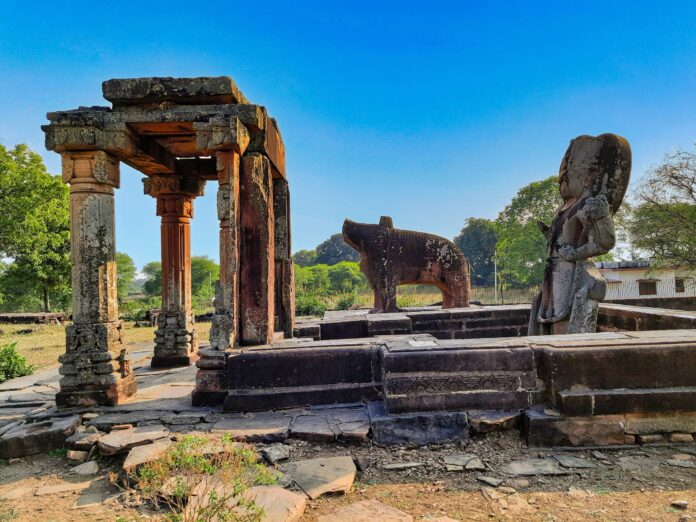India is known for its arts and culture around the world. Indian Art is a limitless collection of drawings, paintings, sculptures, and architecture. These arts are found in a lot of historical places such as the Taj Mahal in Agra, Belluru, Halebidu, etc. Eran is one such art-rich place that saw its full bloom during the Gupta era.
By Prathima.G.Kulkarni
Eran is a small village, which is located on the south bank of the river Bina about 100 km northeast of the ancient sites of Vidisha, Sanchi, and Udayagiri. Eran is considered one of the most ancient towns in India as the coins and inscriptions found here mention old names such as Erakanya, Erakaina, and Airikina. The inscription stones found at Eran are told to be important information as it provides information about the time-lapse and history of the Gupta Empire. Eran was the capital of Erakina Pradesha which was the administrative division of the Gupta Empire.
Various inscriptions have been found from Eran. These inscriptions are of Budha, Gupta, Saka ruler, Sridharverma, Huna Ruler Tormana, Samudra Gupta, and GoprajSati Pillar. Several Sati Pillars have been found in Eran. One of the earliest SatiPillars of India has been found here. In addition to this, various Sati Pillars ranging from Early Medieval Period to Modern Period have been noticed in Eran. Among these, some Pillars have been obliterated, while about 10 Pillar inscriptions are still in good condition.
Gupta Period is called the ‚Golden Age of India‛ or the ‚Classical Age of India‛ partially due to the unprecedented activities and development in the arts, architecture, sculpture, painting, and literature. It is said that the development of culture was at its peak, especially during the rule of Samudragupta, Chandragupta II and Kumaragupta I. Architecture, sculpture, and painting took a big leap and spread even beyond India.
Most of the temples built in the Gupta era were carved with representations of gods mainlyAvataras of Vishnu. The most important temple-remains of Eranare of the Gupta period. During the Gupta period, the characteristic elements of the Indian temple emerged and the present forms began to be used as an integral part of the general architectural scheme. The stone carving from the temples at Deogarh and those from the temples of Udayagiri andEranare excellent specimens of sculptural art.
Coins
The most precious archaeological discovery of Eran is considered the coins which were over three thousand in number from 300 B.C. to 100 A.D. The coins were shaped square and made to believe archaeologists that Eran was one of the ancient production in the history of India.
The common designs found on the coin included the image of goddess Lakshmi who is seated along with two elephants that were spraying water on her, horses, elephants, bull, trees, flowers specifically lotus, swastikas, rivers, Buddhist symbols such as dharma chakra and tri-ratna, triangles.
Pillars
In front of the temple found in Eran at 75 feet pillar was built which included 43 feet of sanding stone with 13 feet square platform. The top of this pillar consists of a double statue of Garuda holding a snake in his hand and a chakra wheel behind his head. Near the platform, on the side facing the temple, there is a Sanskrit inscription that states the year 165 and the Hindu calendar month of Ashadha and a dedication to Vishnu-Janardhana. The Gupta year 165 informs that the pillar was built in 484/485 CE. The pillar is also referred to as the Buddhagupta pillar or Bhima pillar.
Varaha Temple








